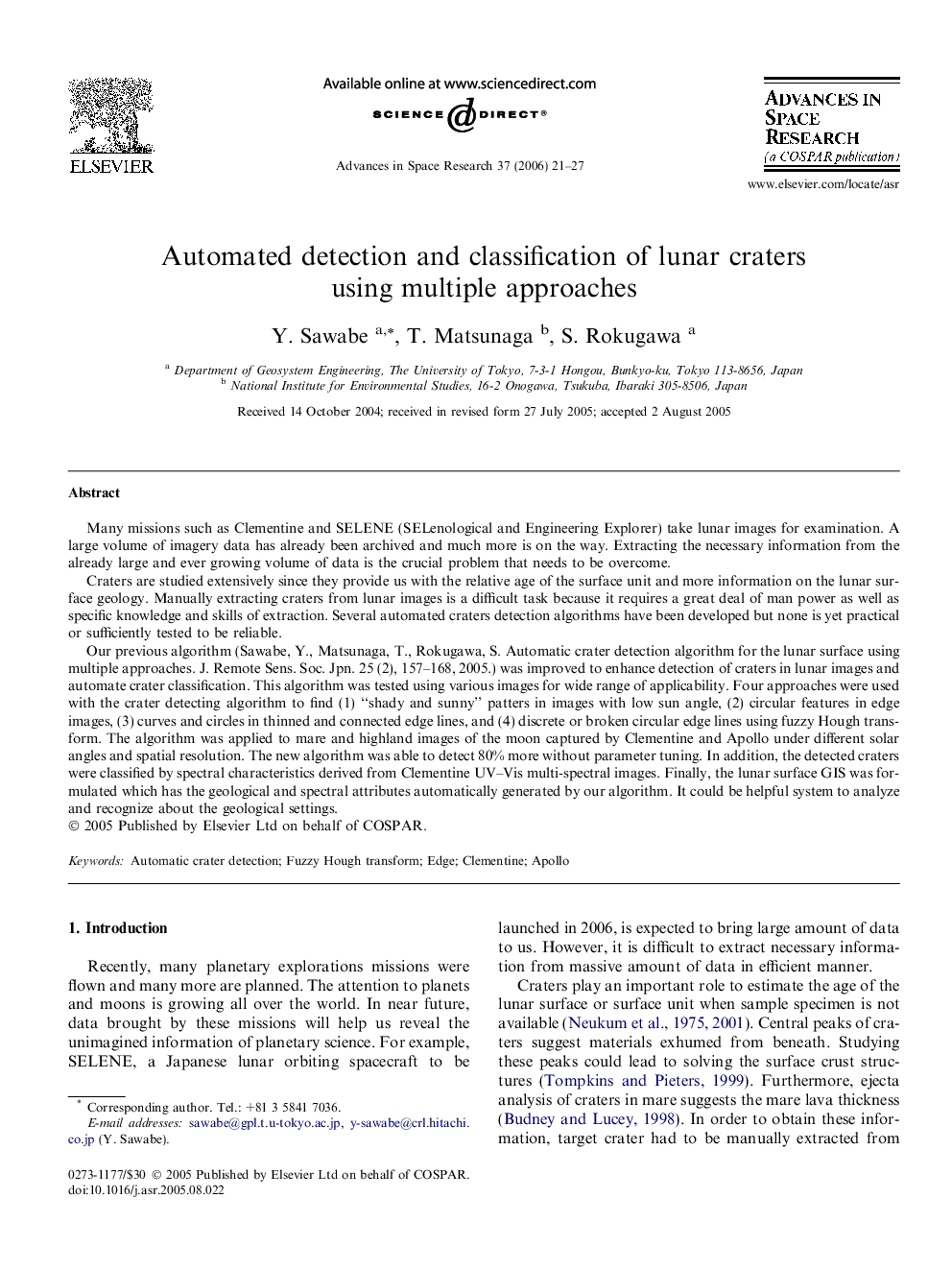| کد مقاله | کد نشریه | سال انتشار | مقاله انگلیسی | نسخه تمام متن |
|---|---|---|---|---|
| 1767506 | 1020194 | 2006 | 7 صفحه PDF | دانلود رایگان |

Many missions such as Clementine and SELENE (SELenological and Engineering Explorer) take lunar images for examination. A large volume of imagery data has already been archived and much more is on the way. Extracting the necessary information from the already large and ever growing volume of data is the crucial problem that needs to be overcome.Craters are studied extensively since they provide us with the relative age of the surface unit and more information on the lunar surface geology. Manually extracting craters from lunar images is a difficult task because it requires a great deal of man power as well as specific knowledge and skills of extraction. Several automated craters detection algorithms have been developed but none is yet practical or sufficiently tested to be reliable.Our previous algorithm (Sawabe, Y., Matsunaga, T., Rokugawa, S. Automatic crater detection algorithm for the lunar surface using multiple approaches. J. Remote Sens. Soc. Jpn. 25 (2), 157–168, 2005.) was improved to enhance detection of craters in lunar images and automate crater classification. This algorithm was tested using various images for wide range of applicability. Four approaches were used with the crater detecting algorithm to find (1) “shady and sunny” patters in images with low sun angle, (2) circular features in edge images, (3) curves and circles in thinned and connected edge lines, and (4) discrete or broken circular edge lines using fuzzy Hough transform. The algorithm was applied to mare and highland images of the moon captured by Clementine and Apollo under different solar angles and spatial resolution. The new algorithm was able to detect 80% more without parameter tuning. In addition, the detected craters were classified by spectral characteristics derived from Clementine UV–Vis multi-spectral images. Finally, the lunar surface GIS was formulated which has the geological and spectral attributes automatically generated by our algorithm. It could be helpful system to analyze and recognize about the geological settings.
Journal: Advances in Space Research - Volume 37, Issue 1, 2006, Pages 21–27